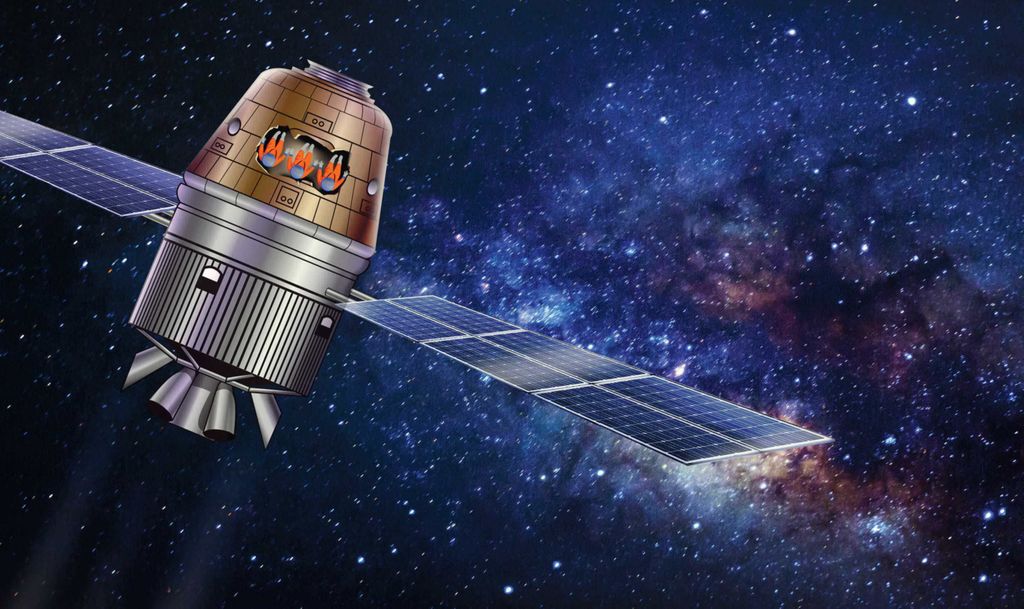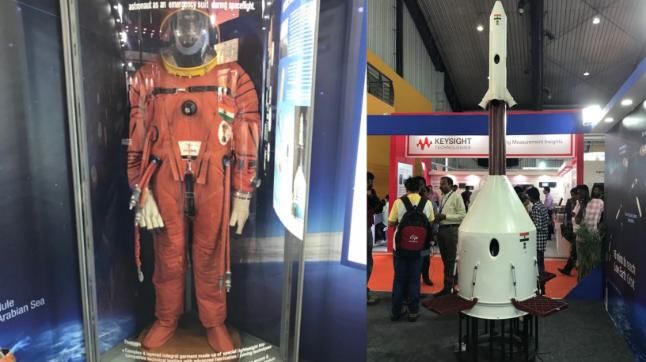Gaganyaan: The Next Big Thing After Chandrayaan-2
Aug 05, 2019 • 22 views
India is just a month away from becoming the first nation to send an unmanned spacecraft to moon's south polar region. As part of Chandrayaan-2 mission, the lander - Vikram[a tribute to the father of Indian space research program - Vikram Sarabhai] and the rover - Pragyan[Sanskrit word which means "wisdom"] is expected to soft-land on the moon in a high plain between two craters, Manzinus C and Simpelius N at a latitude of about 70 degrees south on September 7, 2019.
So, after Chandrayaan-2, one might wonder, is it too early to ask what is next? But ISRO scientists are saying that all we had to do was ask.
Gaganyaan 2022:

On August 15, 2018, while addressing a packed crowd in Red Fort, PM Narendra Modi announced India's endeavor to send Indians into space by 2022. It would be the first manned mission by ISRO and, if successful, India would be the fourth nation to send humans to space after USA, Russia, and China. Within four months of Prime Minister's Independence Day address, Union Cabinet, in December last year, approved a 9,023 crore budget for Gaganyaan mission.
It was announced that Gaganyaan aims to send three astronauts to space for a seven day period. Plans are currently underway to use an advanced version of GSLV MKIII to launch the spacecraft at the low earth orbit of about 300-400kms. If GSLV MKIII sounds familiar, it is because the same launcher has been used for the launch of Chandrayaan-2 as well. The reason cited for the repetition was that GSLV MKIII was more than capable of carrying the required payload.
A K Sivan, the Chairman of ISRO, naturally, was very delighted after the announcement of the budget approval for the Gaganyaan mission. He's reported as saying, "We'll work diligently to meet PM Modi's 2022 deadline." He also added that this mission can produce over 15,000 jobs. ISRO, reportedly, conceived the Gaganyaan mission in November, 2004 only. They carefully planned it by attaining incremental funds for supporting projects since then.

Above picture with 'Space suit' on the left and 'Crew model capsule' on the right is displayed at the launch of Bengaluru Space Expo.
What we know so far?
As already mentioned, there will be three manned crew in this human space flight mission. There's a slightest hope around the scientific community that the astronauts will comprise both male and female. Official statement from ISRO is that selection process is still underway. In January this year, they hinted that the astronauts could be chosen from Indian Air Force (IAF) fighter pilots. This statement was echoed by Director General - Armed Forces Medical Service, Lieutant General Bipin Puri as well during a event in Pune this May.
We have our own criteria and requirements for selecting our crew and training them and have submitted the same to the IAF. The first two rounds of training of the crew will take place at the IAF’s Institute of Aerospace Medicine (Bengaluru), and the remaining phase of training will be abroad. Shivan, who has proposed staffing numbers, has suggested that 10 candidates be trained for the ‘astronaut’ project. We will finally pick three of them. – K Sivan, ISRO chairman
Adding to this, recently on June 2, 2019, ISRO signed up a contract with Russian launch service provider, GLAVKOSMOS for selection support, medical examination, and space training of Indian astronauts for the indigenous manned space mission. According to Gaganyaan's planning team, three selected astronauts would be under 40 years of age and most probably "test pilots".
It is important to know that the astronauts who will be involved in Gaganyaan mission won't be the first Indians to enter space. This feat was acheived on April 2, 1983 by Rakesh Sharma, who flew into space in a Russian spacecraft. Rakesh sharma, notably, is a former IAF pilot as well. There were other Indian-origin cosmonauts who acheived this feat earlier but Rakesh Sharma is the first Indian citizen to accomplish this. His first words from space to then PM Indira Gandhi were "Saare Jahan se Accha, Hindu Sitha Hamara".
Planned model:

As of January this year, the design process was scheduled to be over. The later stage of the process is realisation.
According to A K Sivan, there will be two unmanned test flights before the manned flight mission. Both test flights will be conducted in December 2020 and July 2021 respectively and the human spaceflight will be launched in December 2021 with an expected return time of 36 minutes.
